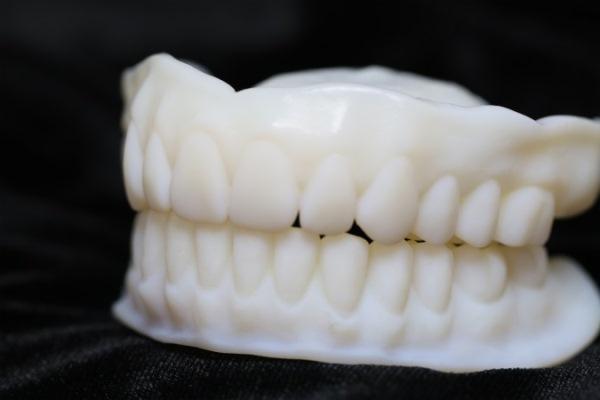When it comes to creating dentures, artificial teeth can be either milled or printed. But which method is more accurate? In a head-to-head comparison, both processes were found to be clinically acceptable.

The researchers compared the accuracy of artificial teeth made using a special disc method with those made with a milling machine and a 3D printer. Four types of artificial teeth were included in the study: upper left central incisors (Max-L1), lower left central incisors (Man-L1), upper left first premolars (Max-L4), and upper left first molars (Max-L6).
“Only minor clinical differences were found in the positional accuracy and precision of artificial teeth produced by a 3D printer and a milling machine,” wrote the study’s authors, led by Dr. Yumika Soeda, PhD, at Tokyo Medical and Dental University in Japan.
Many factors can affect the quality of 3D printing, including light intensity and the printing direction and angle. While the milling method (CAD/CAM) produces a precise, uniform object through highly accurate machine control.
In the study, milling data was generated and three teeth of each type were attached to discs consisting of three circles: large, medium and small. Each of the custom 3D printed discs and custom discs with milled recesses were manufactured based on the data collected by the CBCT, which were then superimposed using CAD software.
Mean Absolute Error (MAE) values were calculated to compare the accuracy and precision. MAE values of artificial teeth in custom discs with milled recesses were compared with custom discs printed on a 3D printer.
The MAE truth values of all types of artificial teeth with milled custom disc except Man-L1 were higher than those manufactured with 3D printed custom disc. The socket offset was 0.25 mm for milled discs. In addition, the positioning accuracy of Max-L4 and Max-L6 manufactured with milled disc was significantly lower compared to those manufactured with 3D printed disc.
“Complete dentures with milled sockets have high accuracy based on the position of artificial teeth and minimal occlusal adjustment,” Soeda and colleagues wrote.
Based on the results of this study, the following conclusions are drawn:
- The authenticity and accuracy of artificial teeth manufactured on 3D printed custom discs are higher in posterior teeth compared to anterior teeth.
- There is no significant difference between the four types of artificial teeth fabricated on custom milled discs.
- Artificial teeth on custom milled discs have a higher accuracy than those on 3D printed discs.
- The mobility of both milled and 3D printed artificial teeth during denture fabrication was clinically acceptable.
Limitations of the study include that the milling data were not used to fabricate dentures.
“If the experimental discs were fabricated in a denture mold, the reference point may have changed during the application process,” the study authors explained.
Because the artificial teeth were individually positioned, they can be applied more accurately than those located along the lines of a denture mold. Therefore, the position, correctness, and accuracy of the artificial teeth may change when positioned along the denture mold.
